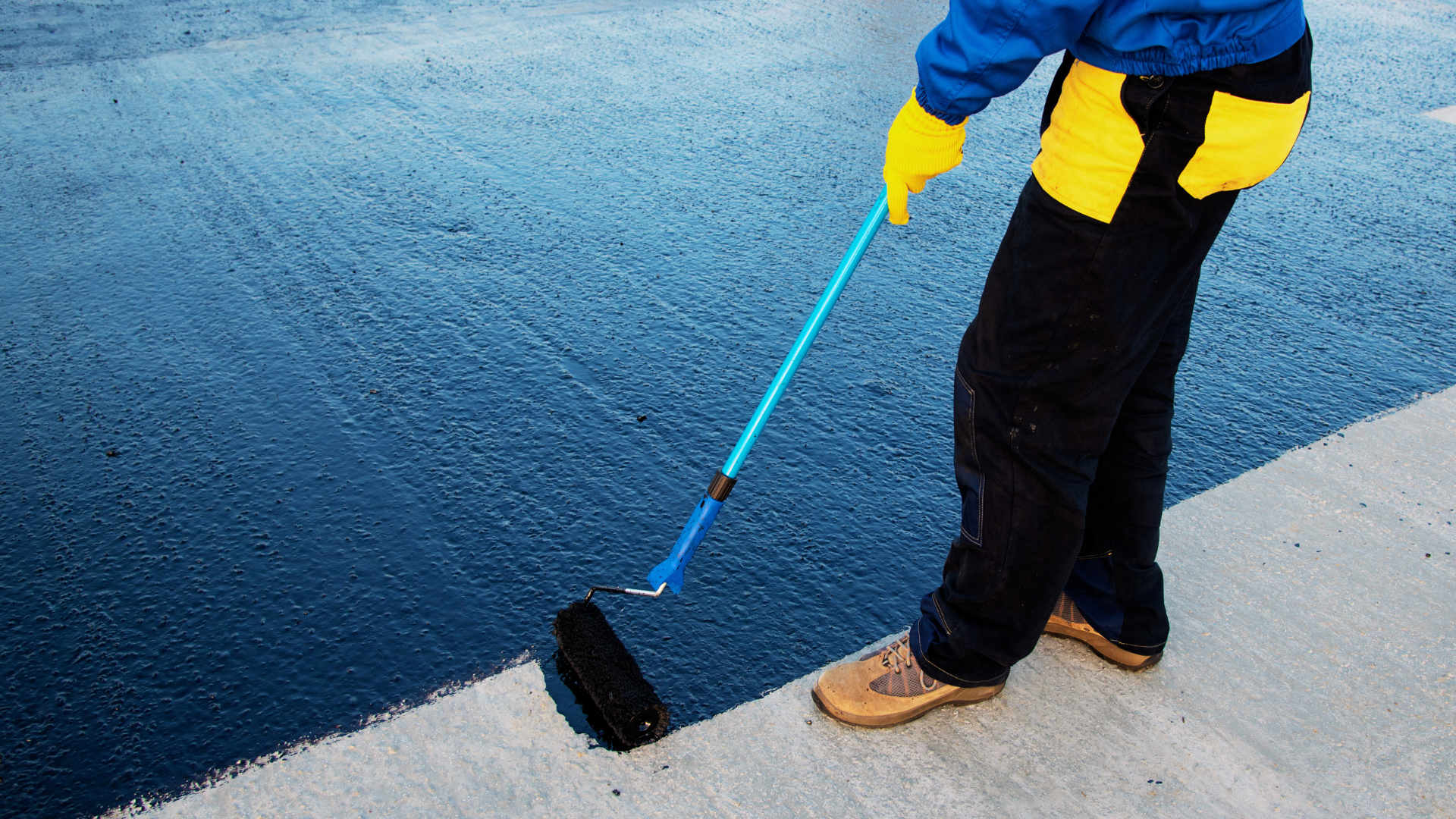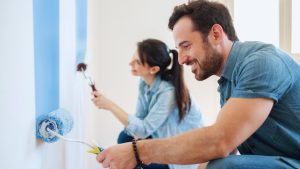Water damage can be a homeowner’s worst nightmare, leading to costly repairs and potential health risks. Implementing effective waterproofing strategies can prevent water intrusion and protect the integrity of your home. From simple DIY fixes to professional solutions, knowing how to waterproof can save time and money in the long run.
Many homeowners are unaware of the importance of basement waterproofing and proper drainage systems. Neglecting these areas can result in mold growth, structural issues, and diminished property value. Being proactive about waterproofing not only safeguards the home but also creates a healthier living environment.
This article explores essential home waterproofing tips that anyone can apply. Armed with practical advice and straightforward techniques, homeowners can tackle moisture problems head-on, ensuring their homes remain safe and dry.
Understanding Waterproofing Fundamentals
Waterproofing is essential for preventing water damage and maintaining the integrity of structures. Knowing the various methods and materials available can help in selecting the right approach for specific needs.
Types of Waterproofing Methods
There are several effective waterproofing methods used in construction. These methods vary based on the location and type of structure.
- Exterior Waterproofing: This involves applying a waterproofing membrane on the outside of the foundations. It prevents water from penetrating into structures.
- Interior Waterproofing: This method uses sealants and waterproof paints on interior walls. It helps to manage moisture and avoid mold growth.
- Damp Proofing: Often confused with waterproofing, damp proofing primarily reduces moisture infiltration rather than providing full waterproofing protection.
- Membrane Systems: These consist of liquid-applied or sheet membranes that create a barrier against water. They are often used in basements and below-grade walls.
Each method has its own application and effectiveness depending on hydrology and soil conditions.
Common Waterproofing Materials
Various materials are utilized in waterproofing to ensure effective water resistance. Here are the most commonly used options:
- Waterproofing Membranes: These can be either liquid-applied or installed as pre-formed sheets. They create a continuous barrier against water.
- Waterproof Paint: This coating can be applied directly to walls to provide an additional level of protection. It is essential for both interior and exterior surfaces.
- Sealants: These materials fill cracks and gaps to prevent water intrusion. Silicone and polyurethane are popular choices for their flexibility and durability.
- Cementitious Waterproofing: This option uses a mixture of cement and additives to create a waterproof layer. It is commonly applied to concrete surfaces.
Choosing the right materials and methods greatly impacts the efficiency of a waterproofing system.
Identifying and Addressing Moisture Issues
Moisture issues can lead to serious problems like mold growth and structural damage. Identifying the source of moisture is crucial for effective solutions.
Dealing with Mold and Mildew
Mold and mildew thrive in damp environments, quickly spreading if left unaddressed. Identifying mold starts with observing visible signs such as black or green patches on walls, ceilings, and even furniture. Musty odors can also indicate mold presence.
Steps to address mold issues:
- Locate the Source: Inspect areas with high humidity or leaks.
- Contain the Area: Seal off affected areas to prevent spread.
- Use Proper Cleaning Solutions: Employ mold removers or a bleach solution (1 cup bleach to 1 gallon of water).
- Ensure Proper Ventilation: Increase airflow to reduce moisture levels.
Regular checks and immediate action can prevent mold from becoming a larger problem.
Solutions for Basement and Crawlspace Moisture
Basements and crawlspaces often experience significant moisture issues due to their proximity to the ground.
Common signs include:
- Damp walls
- Standing water
- Musty odors
Solutions include:
- Install a Sump Pump: This helps to remove excess water in wet basements.
- Use a Dehumidifier: This can effectively lower humidity levels.
- Seal Cracks: Apply sealants to cracks in walls and floors to minimize water ingress.
- Improve Drainage: Ensure that gutters and downspouts direct water away from the foundation.
Addressing moisture in basements and crawlspaces can enhance indoor air quality and reduce health risks associated with dampness.
Preventative Measures and Repair Techniques
Protect your home from water damage by implementing effective waterproofing techniques. This includes ensuring reliable drainage systems, promptly addressing plumbing repair, especially cracks and leaks, and sealing vulnerable areas around the foundation to optimize water flow. Regular upkeep of these waterproofing measures is crucial for long-term protection and maintaining your home’s value. By investing in waterproofing, you’re safeguarding your family’s health and comfort for years to come.
Effective Drainage Systems
A strong drainage system, like those from trusted platforms such as hydroscapespa.com, is essential for preventing water buildup around your home. French drains are a great solution for this, as they direct water away from the foundation. These drains consist of a trench filled with gravel and a perforated pipe that helps capture groundwater.
Sump pumps are also critical. These devices remove water that collects in basements or crawlspaces. Installing a sump pump ensures that excess water is managed effectively, reducing the risk of flooding.
Maintaining exterior drainage should also include regular checks on gutters and downspouts. Keeping them clear and directing water at least five feet away from the foundation prevents soil erosion and water pooling. You should also schedule regular drain cleaning from companies such as Quick Clear Drainage, as removing scale and debris ensures your system can work effectively without any blockages.
Crack and Leak Repair
Minimizing water intrusion starts with addressing cracks in walls and foundations. Sealing cracks is essential to stop leaks. Homeowners can utilize caulking for small gaps or fill cracks with a suitable repair compound.
For larger cracks, applying a waterproof mortar joint repair can provide the necessary support. It is crucial to clean and prepare the area before application for effective sealing.
Periodic inspections can help identify potential leaks early. Addressing any signs of water seepage immediately can prevent more extensive damage over time. Prioritizing crack repairs safeguards against moisture buildup and enhances foundation waterproofing efforts.
Optimizing Indoor Environment and Structural Health
Creating a dry and healthy indoor environment is crucial for maintaining structural integrity and protecting against water damage. Effective techniques can prevent health hazards associated with moisture and improve indoor air quality.
Maintaining a Dry and Healthy Living Space
To ensure a dry living space, utilizing a dehumidifier is essential, especially in basements where humidity levels tend to rise. A dehumidifier helps control excess moisture, which can lead to mold growth and other health hazards.
In areas prone to high humidity, scheduling services like Mold Testing in Boston, MA (or elsewhere), can help identify hidden mold issues and ensure your living space remains healthy. Similarly, regular testing can benefit homes in coastal or flood-prone regions where moisture problems are more common.
Regular inspections for signs of water damage, including stains and efflorescence, help identify potential leaks early. Any signs of dampness should prompt immediate action, such as repairing cracks in walls or foundations.
Implementing a vapor barrier in basements can block moisture from infiltrating walls and floors. This barrier, combined with proper drainage systems, effectively reduces humidity and maintains indoor air quality.
Waterproofing for Long-Term Protection
Investing in masonry waterproofing and waterproofing paint can protect basement walls and prevent structural damage over time. These methods act as shields against moisture intrusion and give added protection to the home’s foundation.
Engaging a waterproofing contractor can help develop a tailored waterproofing plan that addresses the specific needs of the property. Costs to waterproof a home can vary, but the long-term benefits often outweigh the initial investment.
Regular household maintenance, including gutter cleaning and downspout extensions, supports the waterproofing efforts. By preventing water accumulation near the foundation, homeowners can significantly reduce the risk of structural damage and maintain their indoor environment’s health.




